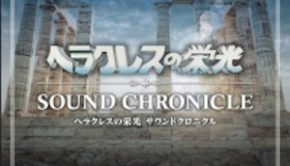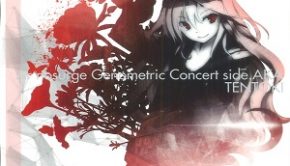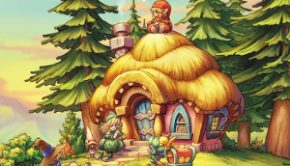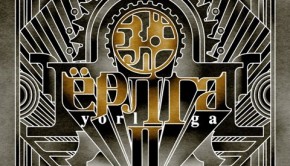yorlga II
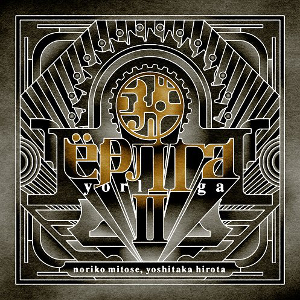 |
Album Title: yorlga II |
| Record Label: Team Entertainment |
|
| Catalog No.: KDSD-00967 |
|
| Release Date: March 1, 2017 |
|
| Purchase: Buy at CDJapan |
Overview
Seven years after the original yorlga, Yoshitaka Hirota and Noriko Mitose are back once again with the sequel to their first album together, yorlga II. As with the first album, Hirota takes the role of composer/arranger while Mitose is responsible for lyrics and vocal performance. How does the music on the second album compare to the first and can the same variety be expected?
Body
While the original album opened up with a stunning vocal theme, reminiscent of Hirota’s Shadow Hearts work, the opening for yorlga II, “Jo -Teito-“, while still retaining a Shadow Hearts like flair, is more instrumental in nature focusing on dark, bass heavy tones mixed with eerie vocals, beautiful piano, and an industrial essence, which helps to set the overall tone of the album. The first vocal on the album, “Gungaku ~Taika Reiban~,” is a rock tune with a military influence and is almost anthem-like in approach. The bass and percussion rhythms give off a march vibe that helps drive the entire piece while the vocals, with Hirota on back-up, help bring the catchy melody to life. Following that, “Tsuki Machitou Yowa,” is more pop ballad in approach, yet mysterious and featuring some Japanese and jazz undertones. The melody itself is beautiful and haunting, but perhaps my favorite part of the tune is how much of a “Moonlight Sonata” influence the piano accompaniment adds to the piece. Despite being a ballad, the bass and percussion add a bit of an oppressive nature. The end result is one of the highlights on the album.
“Yomiyuki Dourou” has more of a jam session rock sound to it with some clear swing influence. The bass work by Hirota is particularly catchy with an equally catchy chorus. Also of note is a great e. guitar solo and instrumental bridge between the general funk/swing nature of the tune. “MIKADO” conjures up images of the opening track, albeit with a more oppressive nature to it. Deep electronic beats, atmospheric synths, piano, dark industrial tones dominate the landscape with this instrumental piece and also hearken back to Hirota’s work on the Shadow Hearts series. Similarly, “Kuhaie” also features a very Shadow Hearts-like atmosphere with its ethereal background, exotic vocal accompaniments, bass and percussion focus, and its frenetic tempo. Mitose’s vocals really add to the melody and the end result is something that I could see working as a battle theme in the now defunct series. It’s certainly another highlight for me.
“Jinkou Teien wa Suiroku Ishi no Ame ni Kasumu” is another stunning piece full of wispy vocals, sullen piano with jazzy undertones, mysterious bells, and guitar. The piece itself is wonderfully atmospheric with an equally memorable melody. The percussion work on this piece is very minimalist in nature, but when present, extremely impactful. Veering into a more traditional Japanese sound is “Yo ni mo Kimyou de Fushigi na Lantern” and features a lot of intricate percussion rhythms that really drive the piece forward with bass and piano also getting a strong focus next to the vocals. The song itself isn’t the strongest on the album, but its festival-like sound and fairly memorable melody alongside its fun chorus line makes for a unique and enjoyable listen. “Kanaria Aika” is another unique tune on the album, blending carnivalesque piano, jazzy electric guitar, and a smidgen of a gothic influence all alongside an excellent vocal melody and performance that conveys sense of mystery.
“Rinshou Mugen Shoukoukun” is, on the whole, a very atmospheric piece. As the piece progresses, additional layers of sound are added with synths, piano, and wispy vocals all lending their own musical texture and identity to the piece. The end result is dream-like and ethereal, but also with a sense of uneasiness. This is also reflected in “Kirisaki Jack” with its dark, atmospheric approach. Piano, strings, bell tolls, and bass all build into a more industrial and heavy sound giving off a very Shadow Hearts/Shin Megami Tensei sound. Lastly, “Shounen wa Yoru wo Kakeru” closes the album on a more upbeat note with its piano and bass guitar focus. The vocals themselves are fast paced and the overall piece has a bit of an avant garde sound that definitely differs from the rest of the music present, but adds more musical variety to the album.
Summary
yorlga II is an album that will certainly please fans of the first album and Hirota’s other works, as it retains elements of both the previous album and his most defining work. In addition, the various musical explorations on the album help add a lot of diversity to the album, showing a different side of Hirota than some might be accustomed to. The atmospheric tracks, while well produced, may not stand as strong as the vocals, but fit within the context of the album quite well, breaking up the more melodically forward tunes, similar to the roles of the first album’s instrumental tunes.
Do you agree with the review and score? Let us know in the comments below!
4.5
Posted on November 29, 2017 by Don Kotowski. Last modified on November 30, 2017.

